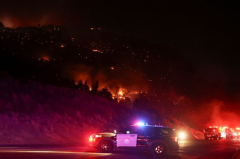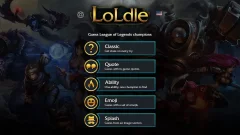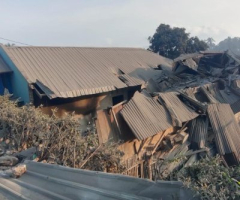By Carey L Biron
WASHINGTON( Thomson Reuters (NYSE:) Foundation) -The devastation of the Los Angeles wildfires has resonated far beyond Southern California, as local officials and residents across the United States have watched the flames, started among dry vegetation, rapidly jumping from house to house.
The crisis underscores efforts to look beyond the forests and public lands that have been the traditional focus of wildfire risk to more community-based mitigation efforts involving homeowners, private landowners, city planners and other experts.
“For a long time, fire has been communicated as a land management problem,” said Andy McEvoy, a faculty research assistant at Oregon State University’s College of Forestry. “It’s not just land management. There’s a community aspect to it as well. We’re certainly seeing that play out in LA.
“It’s increasingly evident with these disasters that all sides of the boundary – public and private, municipal and otherwise – all have some part to play in this process,” he told Context/the Thomson Reuters Foundation.
In Oregon, similarly wind-driven fires in 2020 prompted new work on community-wide wildfire mitigation efforts.
McEvoy was involved in a state-wide wildfire risk mapping released this month, which eventually will be the basis for new codes in home and property risk mitigation in some areas.
Yet the draft Oregon maps in 2022 ran into public opposition, including property owners concerned that the new requirements could mean additional costs. The opposition illustrated the challenges in getting residents to recognize the collective importance of measures such as putting fire-resistant siding on a house or clearing out nearby vegetation.
While California has some of the strictest home building codes in the country, many of the homes hit by the recent fires appear to have been older and not retrofitted.
The fires in the LA region have burned more than 40,000 acres, killing at least 27 people and destroying more than 15,000 structures.
“These policies can benefit not just the homeowner that obeys them but can also benefit their neighbors,” said Matthew Wibbenmeyer, a fellow with think tank Resources for the Future who has studied wildfires for 15 years.
A report from the think tank last year found that as the climate changes, parts of the United States such as the Southeast will see most of their wildfire risk coming from private lands.
But reaching residents and private landowners remains tricky, said Wibbenmeyer, noting they may be concerned about cost or simply resistant to removing a favorite bush to tamp down risk.
“But with the event we’re seeing this week (in LA) and in recent years, I think that’s definitely changing.”
NEW URBAN FOCUS





